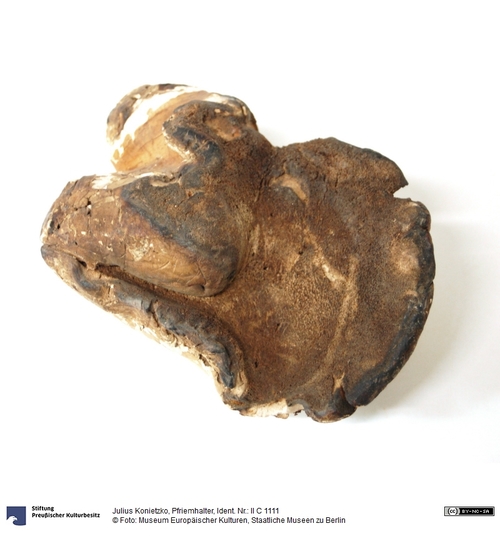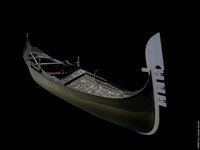Hierbei handelt es sich um einen Baumpilz, den Birkenporling (Piptoporus betulinus).
Bei den Sámi fand er insbesondere als Anti-Mückenmittel Anwendung. Aufgrund seiner Eigenschaft, einen starken Geruch abzusondern, wurde er im Feuer verbrannt und scheuchte so die Mücken fort. Mit seiner Asche rieben sich die Sámi Gesicht und Hände ein und blieben von den Mücken so weitestgehend verschont.
Die Sámi nutzten den Birkenporling auch als Arznei, er hat bei äußerer Anwendung eine wundstillende und entzündungshemmende Wirkung. Außerdem wurde er als Zunder beim Feuermachen benutzt.
Das hier vorliegende Exemplar wurde jedoch offenbar als Nadelkissen verwendet.
Erwerbungsort: Inari, Finnland
Sammler: Konietzko, Julius
en

